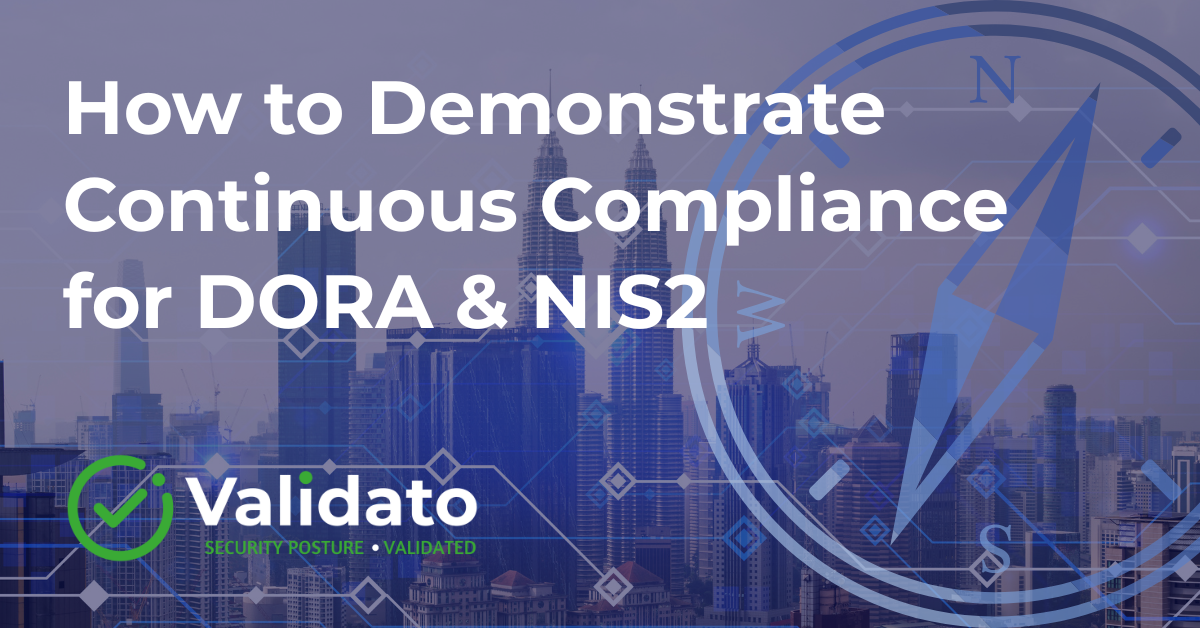Demonstrating Continuous Compliance for pivotal regulations like the EU’s Digital Operational Resilience Act (DORA) and the revised Network and Information Security Directive (NIS2) demands a profound evolution beyond traditional approaches. It necessitates a fundamental shift in mindset, moving decisively away from a static, audit-driven, and often reactive posture.
The old paradigm, where cybersecurity compliance might have been viewed as a periodic, checklist-based exercise primarily geared towards satisfying annual scrutiny, is no longer tenable. Instead, organisations must cultivate a dynamic, proactive, and deeply ingrained culture of ongoing vigilance and resilience. This means viewing compliance not as a destination, but as a continuous journey – an intrinsic part of the operational fabric where security is a constant, rather than an afterthought.
Demonstrating Continuous Compliance for regulations like DORA & NIS2 requires a shift in mindset and the adoption of proactive, ongoing security practices. It’s no longer enough to simply implement controls; you need to prove their effectiveness over time.
Here’s how organisations can approach this, with a focus on how Validato can assist:
1. Establish a Continuous Risk Management Framework:
-
DORA: Requires a comprehensive ICT risk management framework that is continuously updated.
-
NIS2: Mandates the implementation of policies and procedures to manage cybersecurity risks on an ongoing basis.
-
Demonstration: Implement processes for regular risk assessments, updates to security policies, and continuous monitoring of the threat landscape. Validato’s continuous simulation of threats provides real-time insights into your evolving risk exposure, informing your risk management framework.
2. Implement Continuous Security Posture Validation:
-
DORA: Requires regular digital operational resilience testing, including annual vulnerability assessments and threat-led penetration testing at least every three years for significant entities. Continuous Security Posture Validation (SPV), more precisely known as Adversarial Exposure Validation (AEV), goes beyond these minimums.
-
NIS2: Emphasises the need for testing and exercising of incident response plans and security measures.
-
Demonstration: Adopt a platform like Validato to continuously simulate cyber threat behaviours against your environment. This provides tangible evidence of the effectiveness of your controls in real-world scenarios, far beyond the scope of static assessments. Regular reports and trend analysis from Validato can demonstrate ongoing testing and improvement.
3. Ensure Continuous Monitoring and Incident Response:
-
DORA: Requires continuous monitoring of ICT systems and prompt reporting of ICT-related incidents.
-
NIS2: Mandates robust incident handling and reporting processes.
-
Demonstration: Implement continuous monitoring tools and well-defined incident response plans that are regularly tested. Validato can help validate the effectiveness of your detection capabilities (e.g., EDR/XDR) by simulating attacks and verifying alert generation and response workflows.
4. Manage Third-Party Risks Continuously:
-
DORA: Requires ongoing monitoring of ICT third-party service providers.
-
NIS2: Includes requirements for addressing cybersecurity risks in the supply chain.
-
Demonstration: Implement continuous assessment and monitoring processes for your third-party vendors. While Validato directly tests your internal environment, the insights gained can inform your understanding of potential risks introduced by third-party software or services.
5. Foster a Culture of Continuous Improvement:
-
DORA & NIS2: Both regulations imply a need for ongoing adaptation and improvement based on experience and evolving threats.
-
Demonstration: Regularly review the findings from your continuous security posture validation activities (like those provided by Validato) and use them to drive improvements in your security controls, configurations, and user training. Document these improvements as evidence of your ongoing commitment to resilience and compliance.
6. Maintain Comprehensive and Up-to-Date Documentation:
- DORA & NIS2: Require detailed documentation of policies, procedures, risk assessments, and testing activities.
- Demonstration: Ensure your documentation reflects your continuous approach to security and compliance. Include reports and insights from Validato’s simulations to demonstrate the ongoing validation of your security posture.
The ability to consistently prove your defences are robust, adaptive, and effective is no longer an aspiration, but the definitive standard for achieving sustained cyber strength and enduring stakeholder trust. Embracing this continuous journey is key to transforming compliance from a periodic obligation into a powerful catalyst for genuine, lasting security.
By embracing Continuous Security Posture Validation with platforms like Validato, organisations can move beyond the limitations of point-in-time audits and effectively demonstrate their ongoing commitment to the principles of DORA & NIS2, building genuine cyber resilience in the process.
Contact Validato for more information on Continuous Compliance and Security Posture Validation.


